Atrial flutter EKG examples: Difference between revisions
No edit summary |
No edit summary |
||
| Line 45: | Line 45: | ||
---- | ---- | ||
EKG records below are continuous and from a patient being treated with an external cardioverter/defibrillator for atrial flutter. The patient is under general anesthesia and two shocks were given, the first at 50 joules and the second at 100 joules. | |||
[[Image:Atrial Flutter.jpg|center|800px]] | [[Image:Atrial Flutter.jpg|center|800px]] | ||
==Sources== | ==Sources== | ||
*Copyleft images obtained courtesy of ECGpedia, http://en.ecgpedia.org/index.php?title=Special:NewFiles&dir=prev&offset=20080806182927&limit=500 | *Copyleft images obtained courtesy of ECGpedia, http://en.ecgpedia.org/index.php?title=Special:NewFiles&dir=prev&offset=20080806182927&limit=500 | ||
Revision as of 18:11, 15 October 2012
Editor-In-Chief: C. Michael Gibson, M.S., M.D. [1]
For the main page on atrial flutter, click here.
Atrial flutter EKG examples
Shown below is an electrocardiogram from a middle aged man with palpitations. The patient had a dual chamber pacemaker (Vista) set at a lower rate of 60/min, and upper rate of 100/min. The patient had developed atrial flutter, and the pacemaker was following this with a 3:1 block. The flutter is seen in the second panel where the pacemaker was set to a VVI mode and a rate of 30/min. Note that in the first tracing the pacer spikes are not well seen as the pacemaker is pacing in a bipolar mode.
Shown below is an electrocardiogram strip of atrial flutter.

Shown below is an electrocardiogram of atrial flutter 4:1 block with atrial rate of about 270 and a ventricular rate of 68/min.
Shown below is an electrocardiogram of an alternating 2:1 and 3:1 block.
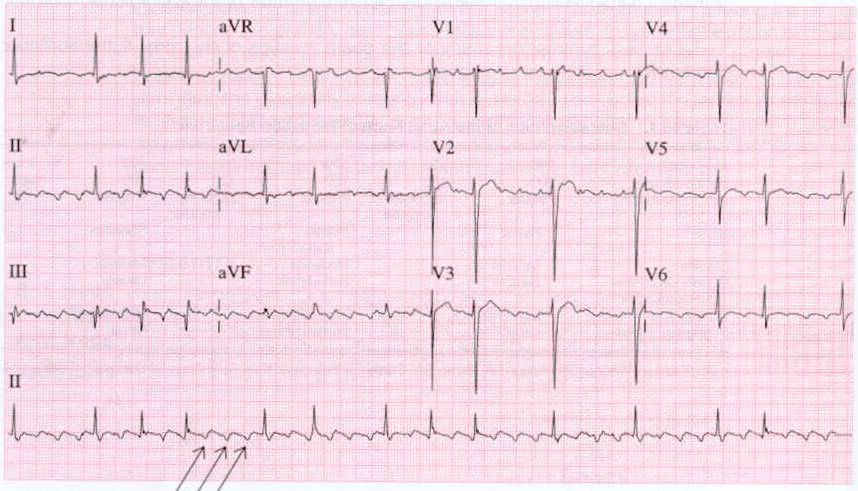
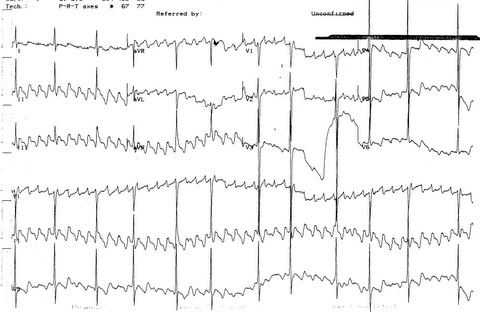
Shown below is an electrocardiogram of atrial flutter with variable conduction.
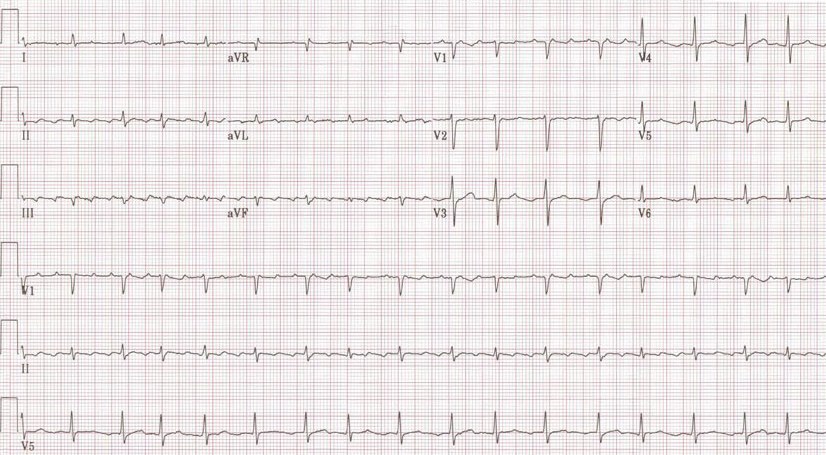
Shown below is an electrocardiogram of a very rare condition with 1:1 atrial flutter.
Shown below is an electrocardiogram of a 2:1 atrial flutter.
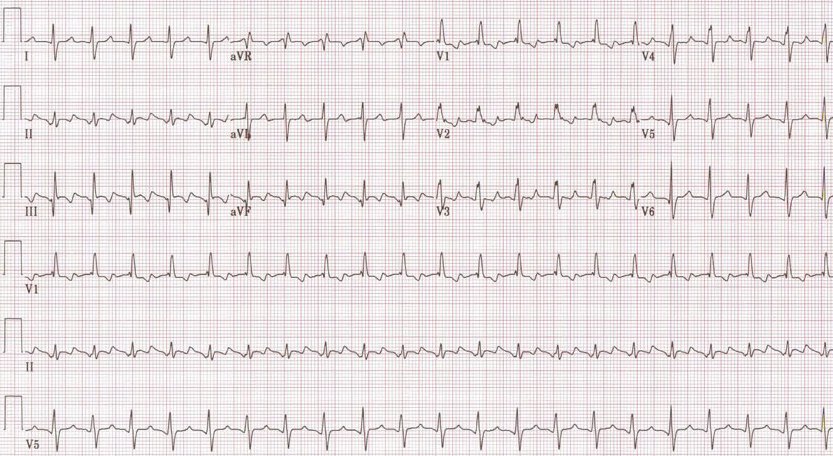
Shown below is an electrocardiogram of a 2:1 atrial flutter.

Shown below is an electrocardiogram of a 3:1 atrial flutter.
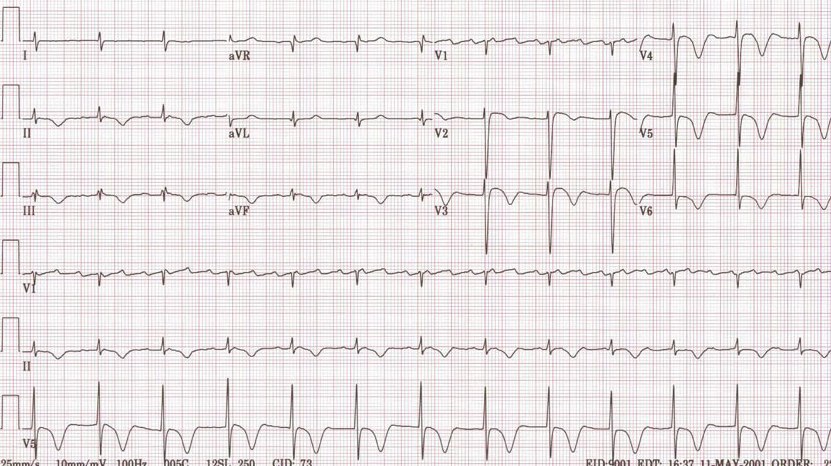
Shown below is an electrocardiogram of a 4:1 atrial flutter.
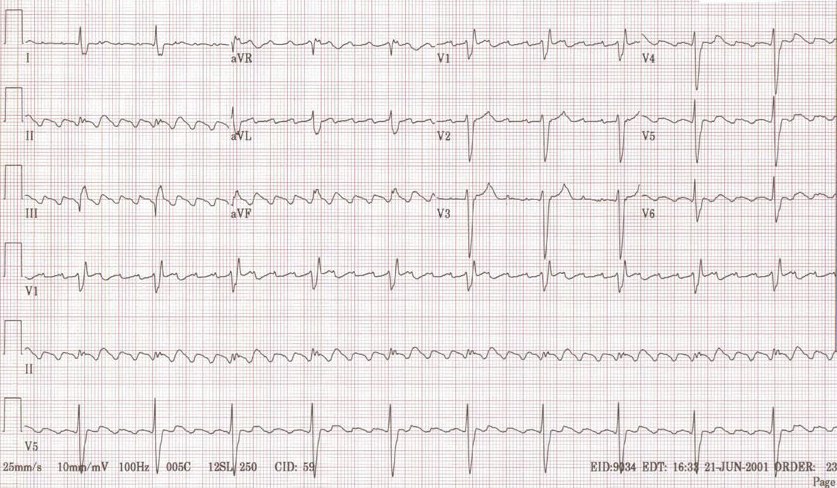
Shown below is an electrocardiogram of atrial flutter with right bundle branch block.
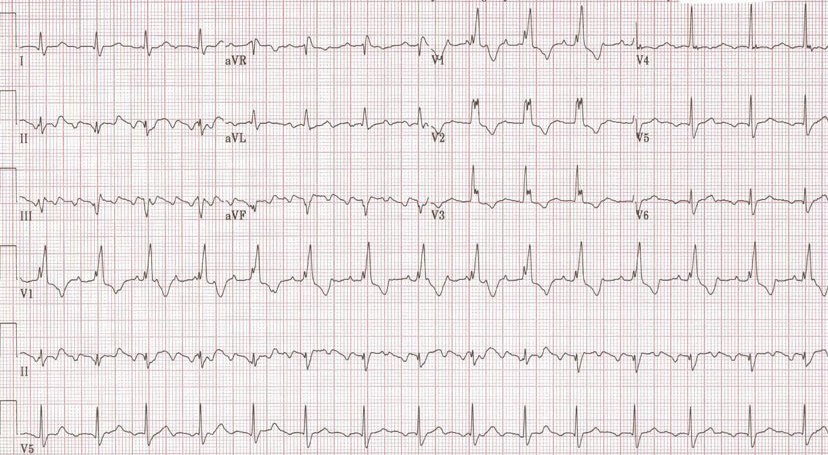
EKG below is from an 82 year old man with a history of lung disease and renal failure. At the time of this recording the patient was on Iron, Lasix, and bronchodilators.
The EKG shows a regular rhythm at a rate of 141/min. This patient had been in atrial fibrillation in the past and the rhythm here is probably atrial flutter with 2:1 block although no flutter waves are seen. The QRS duration is widened at 105 ms and the tall R waves in V5 and S waves in V1 and V2 and the ST depression in the absence of digoxin suggest left ventricular hypertrophy. The QRS is too narrow for ventricular tachycardia and the brief R wave in V2 with the clean down-stroke of the V2 S wave argue against a ventricular origin. The patient was placed on digoxin with a slowing of the ventricular rate and a rhythm that was clearly atrial fibrillation and with a QRS with the same morphology.

EKG records below are continuous and from a patient being treated with an external cardioverter/defibrillator for atrial flutter. The patient is under general anesthesia and two shocks were given, the first at 50 joules and the second at 100 joules.

Sources
- Copyleft images obtained courtesy of ECGpedia, http://en.ecgpedia.org/index.php?title=Special:NewFiles&dir=prev&offset=20080806182927&limit=500